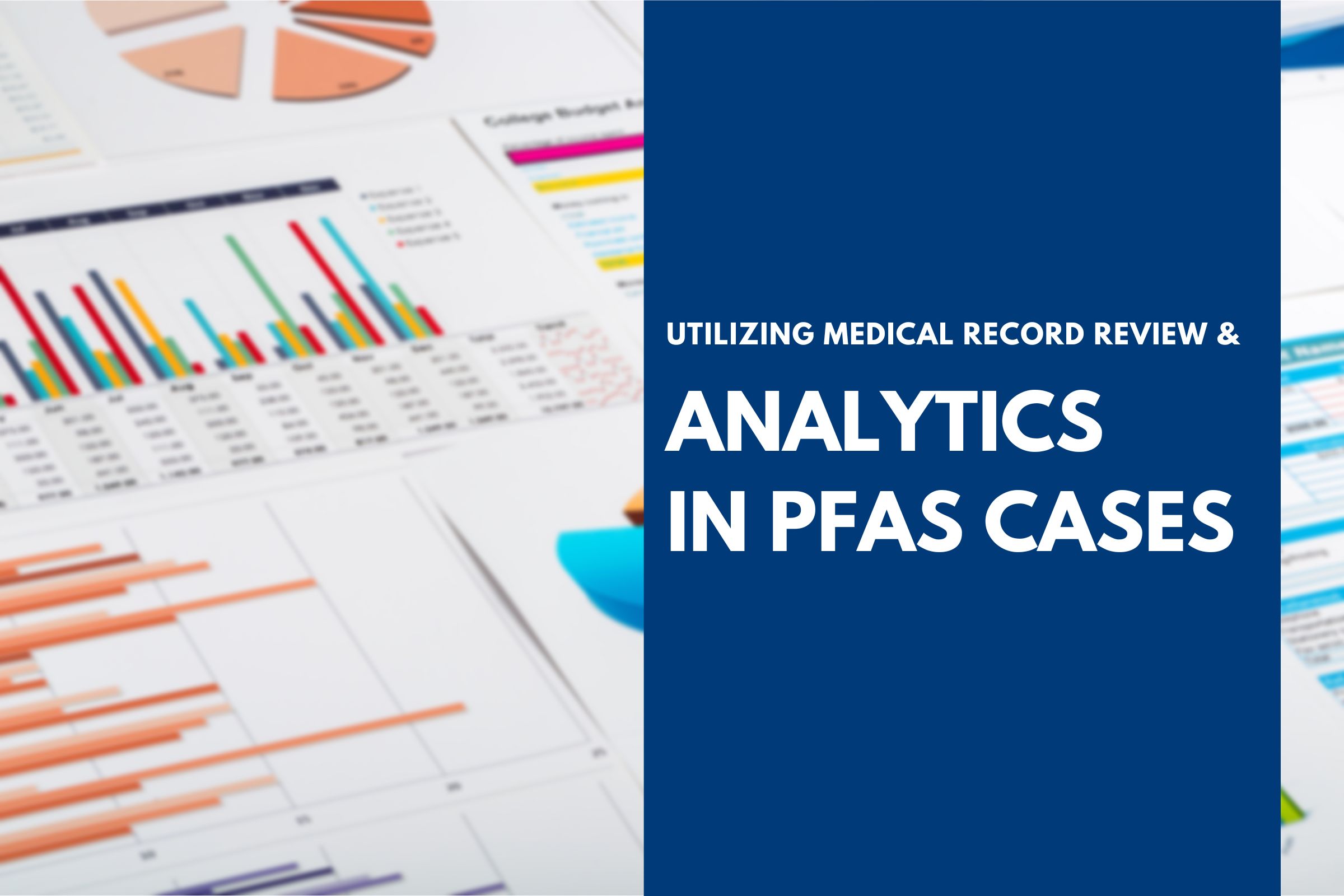
Toxic exposure cases related to potential PFAS (per- and polyfluoroalkyl substances) contamination present many challenges for both sides of the bar. While the EPA continues to research to increase its understanding of the health risks of PFAS, lawsuits are flooding the nation alleging groundwater contamination, personal injury, property damage, and more.
Corporations and their counsel are using toxic exposure experience learned from many years of defending asbestos cases to lay the foundation for how PFAS cases are handled. Regardless of the chemical alleged to have caused the exposure, the same principles apply when approaching the defense of a toxic exposure case. Medical record review is invaluable and necessary to defend your case.
Medical Record Review: Plaintiff History
Nurse Analysts review medical records, legal documents, employment records, and all testing performed to effectively illustrate the plaintiff's history. Important information is abstracted and summarized focusing on the specific allegations of the case.
Asbestos Example
A suit was filed alleging injuries due to asbestos exposure.
Abstracted information would focus on pulmonary conditions and references to asbestos exposure. Knowing that smoking negatively affects the respiratory organs, smoking history would also be included.
If the suit is related to employee exposure, the plaintiff's occupation history should also be included.
Types of Medical Record Review for Toxic Exposure Cases
Chronologies
Provides a timeline of events that focuses on the specific allegations of each case.
Summaries
Provides a narrative summary of the usage, alleged injuries, and treatment from the medical records.
Medical Record Review: Reporting and Analytics
Keywords
Keywords can be used on the medical record review document entries to allow reports to be generated chronologically or by topic.
Case Severity Ratings (CSR)
After all records for a plaintiff are reviewed, the plaintiff can be assigned a case severity rating (CSR) that will reveal their diagnosis, exposure, occupation history, and medical history. This will provide critical aggregate data for the entire plaintiff population.
Routine Report Updates
If records continue to be collected, Nurse Analysts can review the newly collected records and update the medical record review document.
Product Identification
An exposure report noting all specific name brands referenced would allow counsel to prioritize cases based on specific product identification.
Medical Record Review: Customize to Fit Your Needs
As a case develops, your medical record review needs can change. As the litigation progresses into new phases, you may need to ramp up the detail for plaintiffs in the pre-trial workup phase and then scale back down with abbreviated, yet powerful plaintiff population aggregate data reports. Create a partnership with your medical record review provider to request modifications when you need them and receive best practice guidance from their expertise.
Need Medical Record Review Support?
Contact us today for a free consultation.